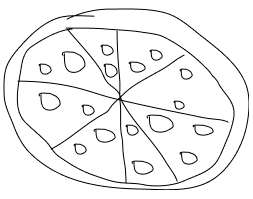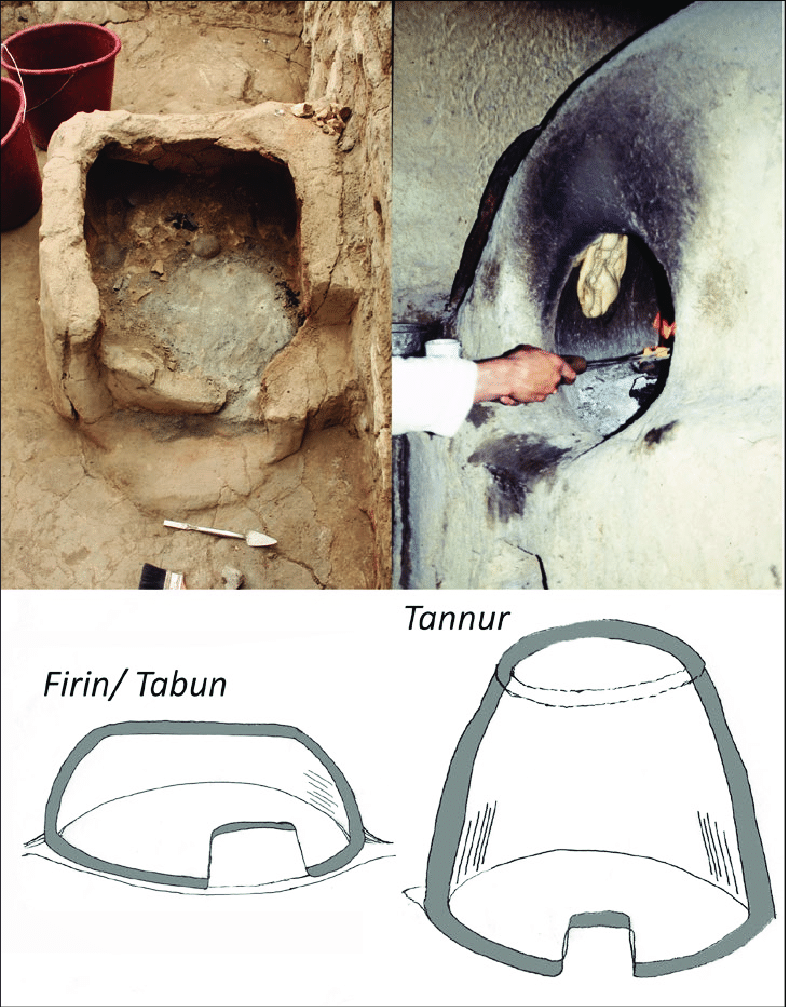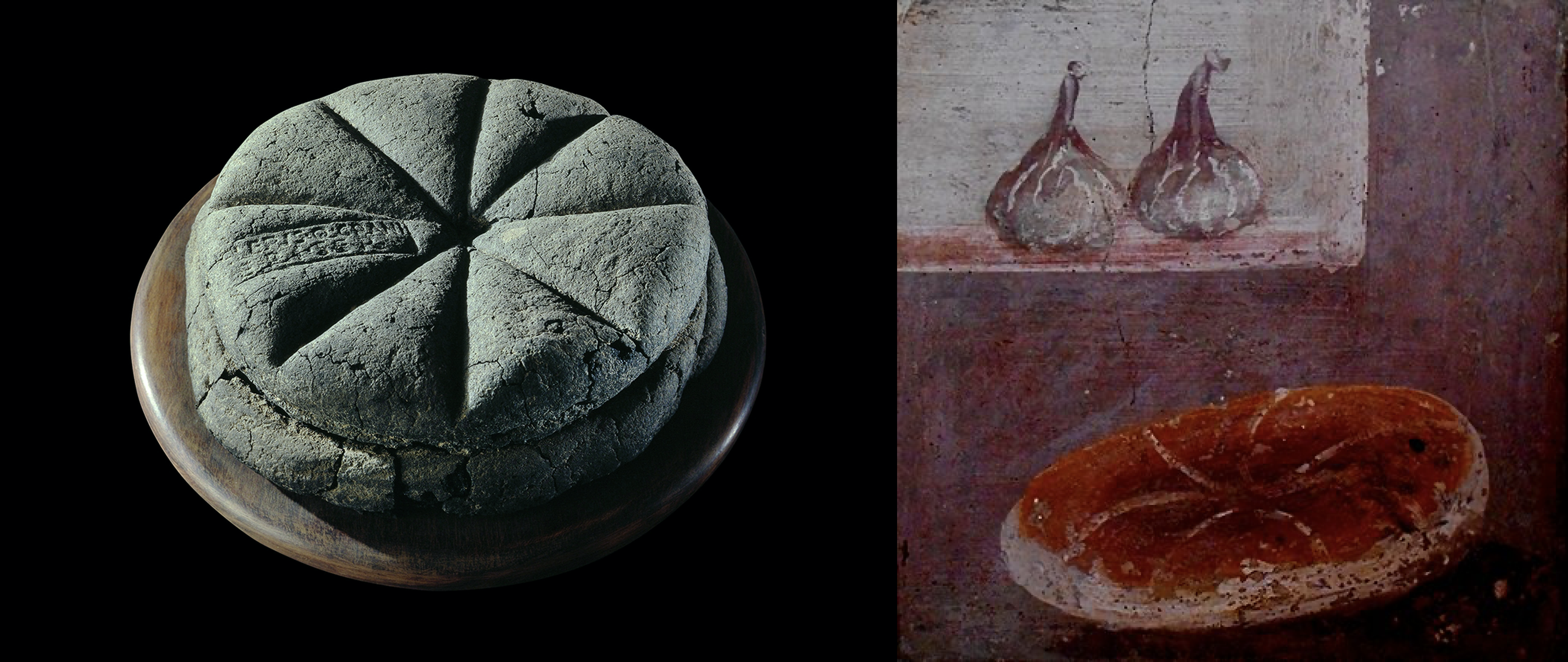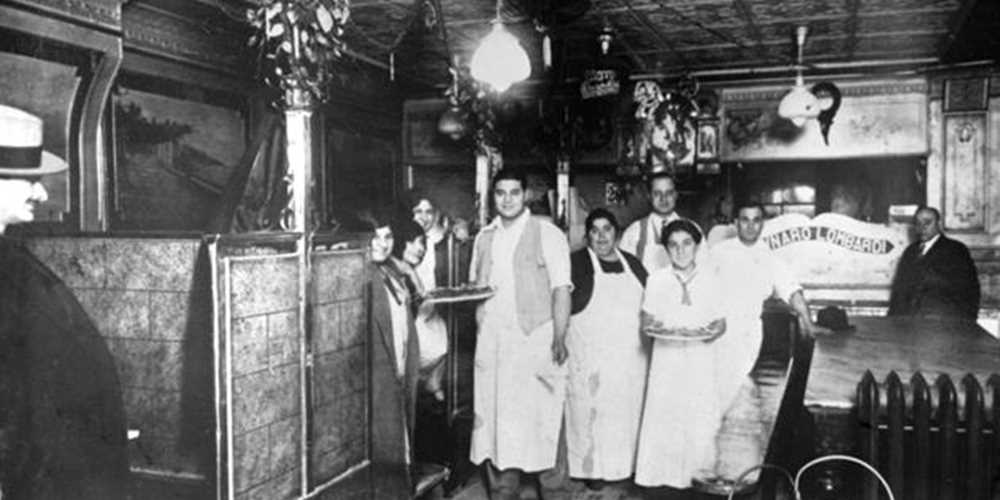Dough Journey - #1 How it all started
2021-01-18 ☼ food

There are tons of resources about Neapolitan pizza-making or the history of it, which can be easily accessible for everyone. Especially after corona has hit the world, people started playing with dough to make bread and pies even more than before. So why the hell on earth did I start working on it and take it very seriously?
First, I want to quickly go over the history of pizza from my perspective based on the notes I have taken so far and what remained in my mind. Feel free to jump to the second part if you don’t want to get bored with details :)
History
The prehistoric people lived millions of years as a nomad and .. no .. ಠ_ಠ .. no let’s not go into that much detail but still, the Neolithic Revolution was about to start and it was going to bring the mastery of the agricultural techniques. They finally figured out how to process and store food. This brand new update on the lifestyle of these lovely people allows them to gradually settle down.
By the creation of conceptual territories, - in other words villages- cooking techniques were evolved and they started positioning hunted animals in vertical ovens inside of combustion pits. Then they gave some flavor to their daily diet with some grains and then it cleared the way to the creation of stone-baked polenta.
 Examples of bread oven types. A. Firin-type oven from Neolithic Çatalhöyük, Turkey (Photos by DQF, 2015). B. A modern tannur type oven with naan bread baking, in Swabi, Pakistan (Photo by DQF, 1997). C. Sketches of general firin and tannur oven types. source
Examples of bread oven types. A. Firin-type oven from Neolithic Çatalhöyük, Turkey (Photos by DQF, 2015). B. A modern tannur type oven with naan bread baking, in Swabi, Pakistan (Photo by DQF, 1997). C. Sketches of general firin and tannur oven types. source
Some of the resources tell that cooking in stone hearth ovens dates back to 25000 years ago, and it is still possible to see stone heart brick ovens in Pompeii from 79 AD when it was buried into ashes.
“In the ruins of Pompeii, the 5th century B.C. Naples, ovens have been found resembling the exact shape of those currently built by Neapolitan artisan oven-makers; following a traditional technique, considered indispensable to build an oven capable of cooking the pizza traditionally.” (The Neapolitan Pizza: A Scientific Guide about the Artisanal Process - Enzo Coccia, Paolo Masi, Annalisa Romano)
Okay now they have some grains, they have a pretty well-functioning oven and more importantly, they have a habit of stone-baking things. More than 5000 years ago, the ancient Egyptians took the stand as the witnesses to the biological miracles of yeast. They seriously considered it to be something paranormal many years and just 20 years before Lombardi’s moved to America, in 1897, Louis Pasteur brought the fermentation process to light and demonstrated the yeast on the act in the ethanol fermentation process that also gifted humankind the beer.
Ancient Romans loved to eat bread. Hard-driven Roman mills allowed for the production of flour due to the shortage of grain and a massive increase in the prices. Ancient people didn’t have time to come up with conceptual ideas because they were trying to survive the odds and nature. However, when circumstances allowed, people became aware of each other’s myths/stories and a collective consciousness began to develop. With that, resources became more accessible after the invention of flour and its widespread use - there was no reason not to be creative.
Although it’s hard to find out when the first pizza dough stretched, it is possible to find cool references in literary works. One of the most popular and profound texts is Aeneid, the epic poem by Virgil. Flatbreads on platters took part in his unique and beautiful way of portraying hunger.
“An once they’d devoured all in sight, still not sated, their hunger drove them on to attack the fateful plates themselves, their hands and teeth defiling, ripping into the thin dry crusts, never sparing a crumb of the flat-bread scored in quarters.”
–The Aeneid, Book VII, Virgil, source
 A carbonised loaf bread from Pompeii (on the left), source Herculaneum loaf (on the right), source
A carbonised loaf bread from Pompeii (on the left), source Herculaneum loaf (on the right), source
By the 18th century, Neapolitan pizza finally found its final form with Marinara, 1735, then the invention of pizza Margherita, 1861 by Raffaele Esposito - you all know the story.
Jumping hundreds of years forward, even though stone hearth ovens have been used to bake delicious stuff for over 25000 years, the first use in a restaurant called Lombardi’s pizzeria in NYC. Gennaro Lombardi was born in Naples and emigrated to the US in 1897. He started a grocery shop but quickly realized how difficult it was to make a living out of it. Then he decided to share the magic with New Yorkers and started baking pizzas at his shop. This was the first step into adapting pizza to American taste and making it probably the most popular food around the world. Even though he brought the concept of “a disc seasoned with tomato” to the US but to some, Lombardi’s pies were more the origin of the American pie than the Napoletana style pizza. For some people, the story of Lombardi is a complete fraud and the rightful founder was Filippo Milone. However, the story goes pretty much the same for Milone as well.
 NYC, 1905
NYC, 1905
The art of Neapolitan pizzaiuoli has been deeply influenced by Mediterranean customs and created a very unique way of preparation and baking. From being a poor man’s food to having extremely rich roots in history and supposably one of the most popular food around the world, a disc of dough seasoned with tomato..
To get to the current state of Neapolitan pizza, there are still a lot of very talented pizzaiolos and sacred pizzerias where you can enjoy the classic taste of charred crust around the world. Thanks to Food Act of the Italian government, they have been amazingly maintaining the culture. Speaking of artisan pizza, every time I try to bring up the topic of gourmet pizza to the table what I got always been that Italian friends bit my head off. However, I think all the food in the same class with pizza in terms of gastronomic depth deserve further innovation. Personally, the sourdough touch on Neapolitan style is priceless for me. I feel super lucky that there are many high-quality pizzerias in Berlin where very talented chefs experiment gourmet pizza but my heart beats for Gazzo and their very elegant menu <3.
Bear with me, I will say the final words on how my journey started :)
My Journey into Pizza Game
Soo going back to the question I asked at the beginning “Why the hell on earth did I start working on it and take it very seriously?”
Short answer: I was fascinated by the evolution of pizza and wanted to use it as a tool to focus on the things that I want to improve, e.g., note-taking and documentation for healthier individual research, writing.
Long answer:
Ever since I could remember I love messing around in the kitchen. I can happily say that I grew up in a family where the women don’t feel obligated to cook for the family. Thanks to my grandpa and dad who encouraged me to get my hands dirty when I am needed in the kitchen. In the end, I ended up thrashing to awaken some of my skills that have been turned rusty like note-taking and efficient individual research by picking a “dish” and using it as a subject to my comeback to my “good old efficient self”.
When I feel distracted from the things I need to focus on, I look for motivation in other places and try to direct the momentum I’ve caught to the main subject. In other words, I try to benefit the intersection where different worlds collide. One world is the one that I am excited about, and the other one is full of things that I have to work on and am running away from at the same time.
Neapolitan dough reflects the great simplicity of the combination of flour, salt, yeast, and water while also reflecting the fragile balance of ingredients and complexity with the fermentation process. This complexity brings the challenge that I have been heavily seeking, and with all that entails, I had pizza in my sights even though it wasn’t my favorite food.
I started baking pizzas with my electric home oven and then decided to step my game up with an Ooni Fyra. To fix my broken features while enjoying tasty pies, I took the first step by creating my pizza database. Then it became a canvas where I have been documenting everything as neatly as possible to provide the necessary conditions at home.
I will share my toolkit, database, and some of my experiences and results in the second chapter of my dough journey.